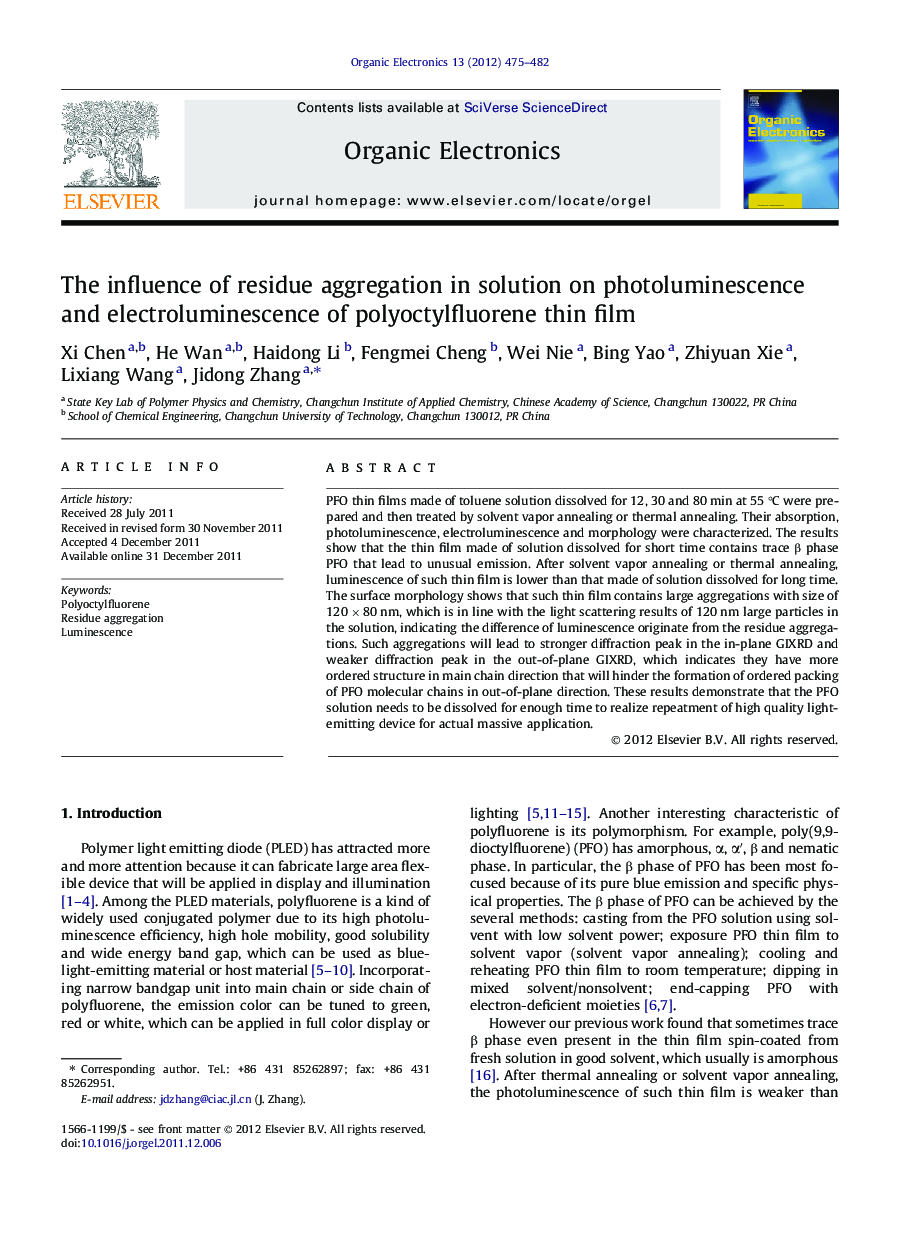| کد مقاله | کد نشریه | سال انتشار | مقاله انگلیسی | نسخه تمام متن |
|---|---|---|---|---|
| 1267641 | 972367 | 2012 | 8 صفحه PDF | دانلود رایگان |

PFO thin films made of toluene solution dissolved for 12, 30 and 80 min at 55 °C were prepared and then treated by solvent vapor annealing or thermal annealing. Their absorption, photoluminescence, electroluminescence and morphology were characterized. The results show that the thin film made of solution dissolved for short time contains trace β phase PFO that lead to unusual emission. After solvent vapor annealing or thermal annealing, luminescence of such thin film is lower than that made of solution dissolved for long time. The surface morphology shows that such thin film contains large aggregations with size of 120 × 80 nm, which is in line with the light scattering results of 120 nm large particles in the solution, indicating the difference of luminescence originate from the residue aggregations. Such aggregations will lead to stronger diffraction peak in the in-plane GIXRD and weaker diffraction peak in the out-of-plane GIXRD, which indicates they have more ordered structure in main chain direction that will hinder the formation of ordered packing of PFO molecular chains in out-of-plane direction. These results demonstrate that the PFO solution needs to be dissolved for enough time to realize repeatment of high quality light-emitting device for actual massive application.
Figure optionsDownload as PowerPoint slideHighlights
► Short dissolving time will lead to residue aggregations in PFO solution.
► Residue aggregations will be kept in corresponding thin film.
► Residue aggregations will lead to unusual emission and reduce luminescence.
► The poor performance originates from more defects in residue aggregations.
► Solution preparation condition is a key factor for repeatability of PLED.
Journal: Organic Electronics - Volume 13, Issue 3, March 2012, Pages 475–482